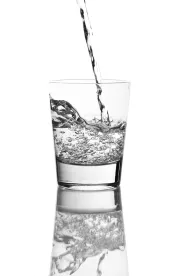The California State Water Resources Control Board (“State Board”) is poised to become “the first regulatory agency in the world to specifically define ‘Microplastics in Drinking Water.’”[1] In September 2018, the California legislature adopted Health and Safety Code section 116376 via Senate Bill No. 1422, adding microplastics regulations to California’s Safe Drinking Water Act (“SDWA”).[2] This provision requires the State Board to adopt a definition for Microplastics in Drinking Water by July 1, 2020. Additionally, before July 1, 2021, the State Board must: (1) adopt a standard methodology for testing drinking water for microplastics; (2) adopt a requirement for four years of testing and reporting of microplastics in drinking water, including public disclosure of the results; (3) consider issuing a notification level or other guidance to help consumers interpret the testing results; and (4) accredit laboratories in California to analyze for microplastics. The State Board can implement these requirements through adoption of a Policy Handbook, rather than through the formal rulemaking process.
Under the requirements of Health and Safety Code section 116376, water suppliers in California will be the first in the nation to test for microplastics in drinking water.
Basis for Regulation: The Prevalence of Microplastics in the Environment
The prevalence of microplastics in the environment was the impetus behind the adoption of section 116376, and the California legislature made a number of relevant findings in adopting the code section, including the following:
-
Microplastics in Surface Waters. Plastics are estimated to compose 60-80 percent of all marine debris and 90 percent of all floating debris.[3] According to a 2017 study by the International Union for Conservation of Nature, 9.5 million tons of plastic waste flow into the ocean each year.[4] All of this plastic eventually becomes microplastic as larger pieces break down into smaller and smaller particles. Microplastics account for roughly 94 percent of the estimated 1.8 trillion pieces of plastic found in North Pacific Central Gyre – the ultimate destination for much debris originating from the California coast.[5] Moreover, based on information from the United States Environmental Protection Agency, microplastics are also commonly found in freshwater systems.[6]
-
Microplastics in Fish. A recent study by the University of California, Davis, and Hasunddin University of Indonesia found one‑quarter of the fish sampled from fish markets in Makassar, Indonesia, Half Moon Bay, California, and Princeton, New Jersey, contained plastic.[7]
-
Microplastics in Tap Water. Researchers at the State University of New York and the University of Minnesota tested drinking water samples on five continents; 83 percent of worldwide samples contained microplastics, while 94 percent of the samples collected in the United States contained microplastics.[8]
Research about the presence and impacts of microplastics in drinking water is in its infancy, as probable microplastics were only discovered in drinking water in 2017.[9] Currently, there is no standard methodology for testing for microplastics in drinking water, no accredited laboratories in which the state can conduct analyses of the testing, and no health standards.[10] Moreover, there are yet to be any studies directly assessing the potential human health impacts of microplastics in drinking water.[11]
Definition of “Microplastics in Drinking Water”
As a first step in implementing section 116376, the State Board issued a proposed definition of Microplastics in Drinking Water, with the public comment period ending on April 24, 2020.[12] Under this proposal, the definition of Microplastics in Drinking Water is as follows:
Solid polymeric materials to which chemical additives or other substances may have been added, which are particles which have at least two dimensions that are greater than 1 and less than 5,000 micrometers (µm). Polymers that are derived in nature that have not been chemically modified (other than by hydrolysis) are excluded.[13]
Acknowledging that the proposed definition could change in response to new information, the State Board’s definition is based on the three criteria of substance, state and dimension.[14]
-
Substance. The proposal broadly defines “polymeric material” to mean either (1) a particle of any composition with a continuous polymer surface coating of any thickness, or (2) a particle of any composition with a synthetic polymer content of greater than or equal to 1 percent by mass.[15] The State Board intentionally used the phrase “are derived in nature,” as opposed to “occur in nature,” to ensure the definition was broad enough to include anthropogenic polymers that occur in nature as a result of environmental contamination.[16] Thus, the broad definition of polymeric material includes nylon, polyester (including cotton‑polyester or wool‑polyester textile blends), synthetic rubber, rayon, and cellophane.[17] It also includes polymers containing high quantities of non‑polymeric additives (g., polyvinyl chloride).[18] Polymers, including cellulose, natural rubber, DNA, proteins, wool, and silk, that are exclusively derived from natural origins and materials, are excluded from this proposed definition. But naturally occurring polymers that have been chemically modified such as dyed wool or dyed cotton are covered by the definition if they are composed of >1 percent synthetic polymer by mass.[19]
-
State. Intending to be highly inclusive of particle diversities, the proposal defines “solids” as a “substance or mixture which does meet the definitions of liquid or gas,” rather than including temperature thresholds as a defining criteria.[20] As such, this definition also includes “semi-solid” polymers (g., wax‑like polymers and soft polymer gels).[21]
-
Dimension. The State Board explains its rationale for requiring “at least two dimensions that are greater than 1 and less than 5,000 micrometers” as follows: (1) plastic particles less than 1 µm are not readily identifiable and require “fundamentally different techniques and instrumentation,” whereas plastic particles greater than 5,000 µm (e., 0.5 centimeters) are generally considered “trash”;[22] and (2) by requiring two dimensions to meet the criteria, larger fibers and films – that are expected to behave “fundamentally different than smaller microplastic particles” and require different techniques for characterization – are excluded.[23] Acknowledging there is insufficient evidence to determine the risk to humans from ingestion of microplastics in drinking water, the State Board references a 2019 World Health Organization report which suggests that smaller microplastic particles are likely more toxic to humans than larger particles and should be prioritized for monitoring in drinking water.[24]
The State Board urges that this definition be broadly interpreted with as few exclusions as possible to ensure that regulations and standardized methodologies based on the definition capture a wide diversity of plastic particle types.[25] The Board also warns that this definition is subject to change in response to new information, as evidence concerning the toxicity and exposure of humans to microplastics is “nascent and rapidly evolving.”[26]
Applicability: Currently Limited in Scope, but Expanded Regulations Are Anticipated
The definition of Microplastics in Drinking Water was promulgated pursuant to California’s SDWA. As a result, its scope extends only to entities and activities covered by the SDWA, which focuses on all waters actually or potentially designed for drinking use, whether from above ground or underground sources.[27] The SDWA applies to “public water systems,” which means a “system for the provision of water for human consumption through pipes or other constructed conveyances that has 15 or more service connections or regularly serves at least 25 individuals daily at least 60 days out of the year.”[28] With over 95 percent of California residents getting their drinking water from a public water system or municipal source, the reach of the new microplastic regulations will be significant.[29]
While many regulated entities may not be directly impacted by the State Board’s current efforts, once the requirements are fully implemented, and data on the prevalence of microplastics in California’s drinking water is better understood, regulated entities should anticipate that future requirements could be imposed that may directly impact their operations. Examples of such requirements could include monitoring and reporting requirements imposed under California Waste Discharge Requirements or federally mandated National Pollution Discharge Elimination System permits, or cleanup obligations under agency ordered directives. Moreover, certain industries, such as those that use synthetic materials in their products, could be targets for future regulation. Based on a study conducted by the outdoor clothing and gear company, Patagonia, and the Bren School of Environmental Science and Management at the University of California at Santa Barbara, when clothes made from synthetic materials, such as polyester and nylon, are washed, up to 40 percent of the tiny fibers they shed evade capture by wastewater treatment facilities and are released into surface waters.[30]
As California establishes regulations for Microplastics in Drinking Water, regulated entities should consider whether their operations produce particles that fall into the proposed definition and be prepared for possible future efforts by the state to regulate microplastics in arenas other than drinking water.
[1] See State Water Resources Control Board, Staff Report on Proposed Definition of Microplastics in Drinking Water (“Staff Report”), at 3 (Mar. 9, 2020).
[2] See Cal. Health and Saf. Code § 116350 et seq.
[3] S.B. 1422, 2017-18 Leg., Reg. Sess. (Cal.), at 3 (Senate Bill Analysis, Aug. 30, 2018) (“Senate Rules Committee Analysis”).
[4] S.B. 1422, 2017-18 Leg., Reg. Sess. (Cal.), at 2-3 (Assembly Bill Analysis, Jun. 23, 2018) (“Assembly Committee Hearing”).
[5] Senate Rules Committee Analysis at 3.
[6] Assembly Committee Hearing at 2-3.
[7] Senate Rules Committee Analysis at 3-4.
[8] Id. at 4.
[9] Assembly Committee Hearing at 3.
[10] Id. at 7.
[11] Id. at 3.
[12] California Water Boards, Drinking Water: Microplastics (last updated Apr. 15, 2020).
[13] Staff Report at 2.
[14] Id.
[15] Id.
[16] Id. at 15.
[17] Id. at 4, 17.
[18] Id. at 17.
[19] Id. at 3, 18.
[20] Id. at 2, 4.
[21] Id. at 18.
[22] In 2016, California amended the Ocean Plan to include provisions for the control of trash, including a requirement to install “full capture systems” in storm drains to restrict trash particles larger than 5 mm. See State Water Board, Resolution 2015-0019: Amendment to the Water Quality Control Plan for Ocean Waters of California to Control Trash and Part 1 Trash Provisions of the Water Quality Control Plan for Inland Surface Waters, Enclosed Bays, and Estuaries of California (Apr. 7, 2015). The State Board’s proposed definition of microplastics in drinking water took this into consideration – the adoption of 5,000 μm as an upper limit “would eliminate contrasting definitions of ‘microplastics’ within the State Board.” Staff Report at 20.
[23] Staff Report at 19-20.
[24] Id. at 20-21.
[25] Id. at 7.
[26] Id. at 2.
[27] See Health & Saf. Code § 116270(h); 42 U.S.C § 300f et seq.
[28] Health & Saf. Code § 116275(h).
[29] Senate Rules Committee Analysis at 4.
[30] Assembly Committee Hearing at 2.





 />i
/>i

